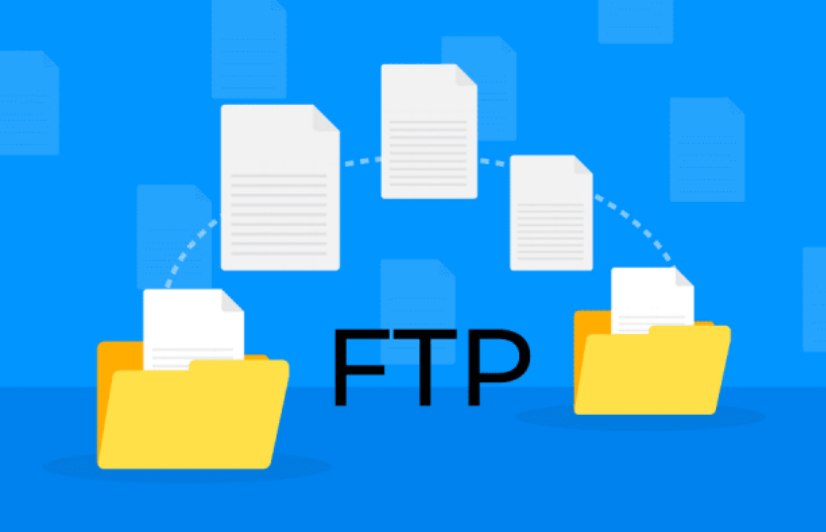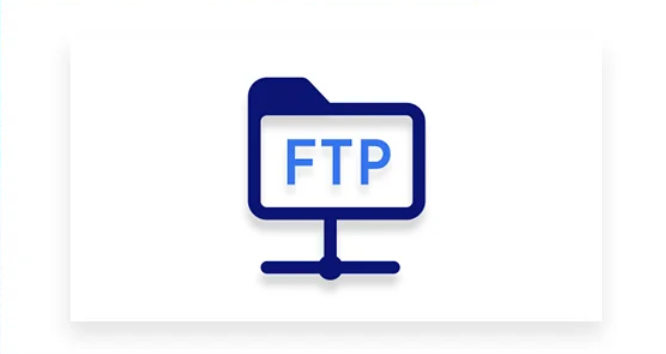Understanding FTP Basics
File Transfer Protocol (FTP) is a critical component in the landscape of digital communication. As a standard network protocol, FTP facilitates the transfer of files between computers on a network. First created during the dawn of the World Wide Web, it still remains popular to this very day, and is particularly popular amongst web developers and system administrators.
FTP operates on a client-server model, meaning a client (such as your computer) communicates with a server to exchange files. This system is essential for organizing roles, where the server hosts the files and the client accesses or uploads them as needed. The process begins with the client using FTP software to connect to the server. Once connected, the client can browse the server’s file directory, upload files, download files, and even delete files if permissions allow.
While FTP may seem technical, its usage is straightforward thanks to user-friendly FTP client software. These tools offer front ends that make the task easier to execute than if the person is a technophobe.
FTP is not just limited to file transfers, and the following will explain its importance in detail. It is an enabling technology for daily activities that include updating a website, data archival, and proper organization of files among others. Because of these facts, FTP remains to be popular, or most preference related to the different fields of industry.
While today there are more secure and innovative platforms, learning about the basics of FTP allows any person to deal with vast amounts of files or website content management.
The Mechanics of FTP
FTP functions through a client-server model, crucial for its operational framework. The client, using specialized FTP software, initiates a connection to the server. This interaction starts with the client sending a request to the server to access its file directory. The server then responds, granting or denying access based on set permissions. The division of work in this manner avoids confusion of the files and also makes sharing of the data a streamlined process.
The data transfer process is two-fold: uploading and downloading. Uploading refers to the sending of files from the client end to the server and is used mainly to update a Web site, to encode videos, or to back up data. Downloading on the other hand pulls files or data from the server to the client, it is crucial in retrieving data stored in a server or when accessing resources of a server located from the client.
FTP also employs a distinct way of managing connections using two ports: the control port and the data port. The control port handles the command and response exchanges, while the data port manages the actual file transfers. This separation enhances the efficiency and reliability of FTP operations.
Operating in active and passive modes, FTP adapts to different network configurations. In active mode, the client opens a random port and waits for the server to establish a connection. Passive mode is utilized when the client side is located behind a firewall, by the server having a certain port dedicated to the connection, making the receiving of files easier.
The FTP Protocol and Its Ports
The FTP protocol operates using two primary ports: the control port and the data port. The control port, typically port 21, is responsible for handling the commands and responses that manage the connection. These are among the tasks that users perform in the system, establishing connections, directories, and file transfers. On the other end of the spectrum is the data port which involves the sending and receiving of files between the client and server.
In active mode, the client specifies a random high-numbered port to which the server will connect for data transfer. This mode poses some difficulties when the client is behind a firewall while accepting incoming connections from the server. Conversely, passive mode alleviates this issue by having the server specify a port for the client to connect to, thereby allowing the client to initiate both the control and data connections. This is especially useful in restrictive network conditions where one can make only a certain number of connective calls.
The modification made to FTP’s system to have a two-port system that effectively partitions the control and data ports improves the protocol. Categorized concerning the control and data ports, users can familiarize themselves with individual settings of their FTP to fit their network settings for optimum and efficient operation of FTP.
Typical FTP Applications
FTP is essential in numerous practical applications in various fields as shall be demonstrated below. One common use is that in web development people use FTP to transfer and manage files on a web server. This is important to make sure that the content of the website is well organized including the HTML files, images as well as script that may be placed on the website need to be updated from time to time.
Also, FTP is necessary for the creation and storage of copying of a website’s data with the help of backup, and its base is necessary for quick refusal in case of loss or damage of data.
Remote server management is another area where FTP is indispensable. Managers working for systems use FTP as a means of s transferring actual configurations, updates, and patches to servers to guarantee that these are always updated and protected from common threats. Thus, this method of file transfer is critical to ensure that remote systems remain effective and uncompromised.
FTP is also commonly used in corporate environments for sharing large files that are too cumbersome to send via email. FTP can also be used to share and distribute reports, media files, important documents, and anything that needs the attention of many people within an organization. This capability is probably more helpful where co-worker interactions are cutting across geographical regions.
Educational institutions and research organizations often use FTP to distribute academic papers, datasets, and software tools. Due to the largeness in the size of the file sizes, the protocol would be recommended for sharing big data in research among researchers and students in particular.
In media production and broadcasting, FTP is used to transfer high-resolution videos and clips, music tracks, and other media files between production and or broadcast servers. This ensures that content is delivered promptly and in the correct format for distribution.
FTP Client Software and Utilities
When it comes to managing file transfers via FTP, several robust client software options stand out. FileZilla is one of the most recognized FTP clients which are absolutely free and always remarkable for their relatively user-friendly interface and features such as file drag and drop and compatibility with different operating systems.
Cross-platform favorite Cyberduck is also for FTP and cloud services, which means that the user convenient multi-tasker. WinSCP is more appropriate for safe file transfers and works perfectly in Windows combined with script execution options. Others are Transmit for MAC application which is famous for its fast transfer rate and attractive look and feel and Core FTP which offers for example site to site and browser integration among other features.
Based on these aspects, users should choose FTP client programs that have SFTP or FTPS connection support and with simple interfaces for the user in effecting the transfers. Other elements including the transfer queue, file synchronization, and logging, are also beneficial in boosting productivity of the application and reliable transfers. Advanced users might find automation tools and command-line interfaces particularly useful for streamlining repetitive tasks.
Security Aspects of FTP
Despite its widespread use, FTP faces significant security challenges. One of the most critical issues is that FTP transmits data, including usernames and passwords, in plain text. This makes it vulnerable to eavesdropping and man-in-the-middle attacks, where malicious actors can intercept and potentially alter the data being transferred.
To mitigate these risks, it is advisable to use secure variants such as FTPS (FTP Secure) or SFTP (SSH File Transfer Protocol). FTPS employs SSL/TLS encryption to protect data during transit, while SFTP uses SSH to provide a secure channel for file transfers. Each of the two methods assures that information cannot be accessed by those who should not, thus minimizing the exposure greatly.
Moreover, it is important to have strong approaches to authentication of a connection to the Internet. This pertains to the use of combined passwords, provision of a number of accounts with passwords, and regular changes in passwords. Firewalls can also be configured to restrict access to FTP servers, allowing connections only from trusted IP addresses. One more efficient way is to update or upgrade the FTP server program and software, always using new security patches and upgrades, as older programs and applications are easily penetrable.
User access should be carefully managed by granting permissions only to those who need them and regularly reviewing access logs to detect any suspicious activity. Using these approaches in unison it is possible to enhance the security of FTP operations significantly and maintain protection of valuable information from possible threats.
FTP Alternatives and Comparisons
With the rise of advanced security concerns, alternatives like SFTP and FTPS have become more attractive for secure file transfers. SFTP, which operates over SSH, ensures a secure channel, while FTPS uses SSL/TLS encryption to safeguard data. These alternatives proved to be more secure than the traditional File Transfer Protocol application.
Another available method that is almost as useful and often includes encryption and easier access management are cloud systems like Google Drive or Dropbox and Microsoft One Drive. These cloud services can come with nice, easy-to-use front-ends and can integrate well with other programs or services, but they can come with the same downside, where the user does not have direct access to the server as one does with FTP.
In conclusion, based on particular security features and business peculiarities, FTP may be replaced by its analogs. For users prioritizing security, SFTP or FTPS might be the better choice, while those looking for convenience and integration may lean toward cloud-based solutions.




